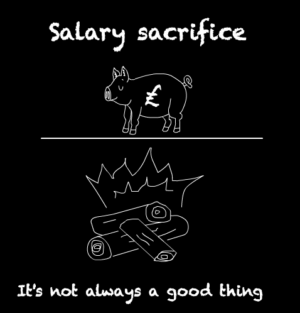The middle of February 2020, and the global stock market is riding high. There are concerns – the unpredictable US president, Britain’s disentanglement from the EU, and how quickly China can recover from a new virus that has turned a key city into something from a dystopian novel – but also optimism. The US/China trade spat is easing. US election years tend to be good for markets. There’s also the Olympics to look forward to.
Fast-forward fourteen weeks and… wow.
We’ve been living through a real-life disaster movie. The build-up was tense and then the action exploded at an unimaginable pace. Heroes and villains filled our TV screens, augmented by scenes of human misery and suffering. Millions sickened – hundreds of thousands died. Billions ‘sheltered in place’ as the US lingo puts it, many terrified of leaving their homes. We’re only just beginning to realize the cost in terms of jobs, economic dislocation, and the ginormous IOUs written by governments worldwide.
Investors have had a front row seat. The stock market’s reaction may seem exaggerated – like an excitable child in the row behind us, screaming and gasping as events unfold. But it’s also uncannily predictive. By late February it saw things taking a turn for the dramatic, and began to swoon. Portfolios reeled.
For the rest of our lifetimes we’ll see data points from 2020 popping up in any backwards-look at the records. The textbooks blogs won’t need to be rewritten – event-driven crashes are nothing new – but such was this one’s ferocity that the data will need to be revised.
Here are some numbers for the ages.
1. The S&P 500 fell 30% in 22 days

US markets saw the 30% fastest decline ever. Other markets plunged even more steeply, but the US S&P 500 is the big beast of the jungle. Its companies make up more than half of the global equity portfolio.
2. The spread on the riskiest debt jumped by 9.8%

A frantic dash for cash and into the safe havens of government bonds saw riskier bonds dumped overboard like orders for Tokyo 2020 t-shirts. Widening credit spreads are normal in risk-off environments, but again the speed here was dramatic. According to Morningstar, spreads for BBB, high-yield, and CCC and lower-rated credits jumped 3.57%, 7.30%, and 9.78%, respectively, during the peak-to-trough period. This was the largest widening within a month-long period since the 2008 financial crisis.
3. The Vanguard Total Bond Market ETF traded at a discount of 6.2% to net assets
The money markets looked in danger of breaking down. On 12 March the Vanguard Total Bond Market ETF traded at an unprecedented 6.2% discount to its net asset value (NAV). Oversimplifying hugely, this implied investors could buy the ETF, sell its underlying holdings, and make an instant profit. But of course they couldn’t, because liquidity was evaporating, and also the apparent discounts on many bond ETFs anticipated declines in market prices in advance of them being discovered with real-life trades. On Sunday 15 March the US Federal Reserve rode to the rescue and the disruption was contained.
4. The UK government announced a £350 billion economic defence package
We’ve never seen anything like this government intervention outside of wartime – and not even then so baldly declared. On 17 March the newly-installed UK chancellor Rishi Sunak told the country he was ready to deploy £330bn in loans and £20bn in other aid.
5. US oil prices went below $0

Here’s something else you don’t see every day. Or indeed, ever. On 20 April the price of oil in the US – as indicated by futures contracts – turned negative. In theory this meant an oil producer would pay you to take oil off their hands. Oil demand had collapsed with the global lockdown, and storage capacity looked close to full. “This is off-the-charts wacky,” Stewart Glickman, an energy equity analyst at CFRA Research, told the BBC. “The demand shock was so massive that it’s overwhelmed anything that people could have expected.”
6. Some 20.5 million US workers lost their jobs in April

This cover from The New York Times is a legendary effort that will define the period. Breathtaking and defying almost everyone’s worst-case scenarios back in late February – whatever they now say they believed back then.
7. The Bank of England told us to get ready for the worst recession in 300 years

On 6 May the central bank warned the British economy looked set to shrink by 14% in 2020. This would be the biggest annual contraction since a decline of 15% in 1706, based on the bank’s best estimate of historical data.
8. The largest British firms slash dividends by £24bn in the face of crisis
Looking to hoard cash, prevented from paying dividends due to receiving state support – or simply dodging a PR disaster – UK firms have scrapped their dividends. By early May the UK’s 100 largest companies had cut their payouts by £24 billion, according to the investment bank Gleacher Shacklock. Link Asset Services’ worst-case scenario envisages total dividends down by 51% in 2020 – although its central expectation is for a more bearable 32-39% decline. Either way, the age-old truism that dividends are far less volatile than prices looks like it will be upended by Covid-19.
9. The UK government pays the wages of an extra eight million workers
Britain has so far been spared the enormous job losses seen in the US, largely due to Rishi Sunak’s very generous support package. By 19 May some eight million UK workers had been furloughed onto the UK government’s coronavirus job retention scheme, which sees the state pay 80% of an employee’s wages. The scheme has won plaudits, but it’s expensive. It had already cost the Treasury £11 billion by late May, and it has now been extended to the end of October, albeit with employers asked to chip in from 1 August.
10. The UK government sold gilts with a negative yield of 0.003%
With investors still smarting from the crash and fears of a depression looming, the UK government sold £3.8 billion worth of three-year gilts on 20 May at a negative yield of 0.003%. This is the first time conventional gilts have been sold with a negative yield – it meant investors were willing to give their money to the UK government with the certainty of getting back less in the future. Why would they do this? Perhaps some had no choice but to take the going rate – for example pension funds – but others may anticipate deflation (falling prices) which could increase the real value of cash, even eroded by negative interest. Or maybe they see gilt yields going lower still, allowing them to sell their bonds for a profit – the so-called ‘greater fool’ theory.
11. The UK budget deficit skyrocketed to £62.1bn in April

Whatever the reason, it’s a good thing the UK government can borrow so cheaply, because it has to. Bloomberg reported that April’s £62.1 billion deficit – the most since modern records began in 1993 – was almost three times the previous peak, and almost as much as in the whole of the previous fiscal year. Even during the financial crisis, monthly borrowing was never more than £22 billion.
12. The S&P 500 leaps 33% from its March low

What goes down doesn’t always bounce back – certainly not within short two months – but that’s what has happened with equities in the US. To return to where we started, the US market is up 33% since the trough of despair on 23 March. I’d noted the day before that investor panic seemed to have reached doomsday levels, and I was adding to my shares accordingly. But I was doing so with a long-term horizon – I didn’t expect a face-ripping bull market over the next two months!
Has the market correctly discerned that economies will recover quickly as lockdowns are lifted? Were the worst fears of the virus overblown? Or is the situation still truly dire – but even after all those job losses and dividend cuts, equities are the most attractive asset class compared to the negative yields on government bonds and barely-there interest on cash?
After the rollercoaster we’ve been on in 2020, I wouldn’t rule anything out.





